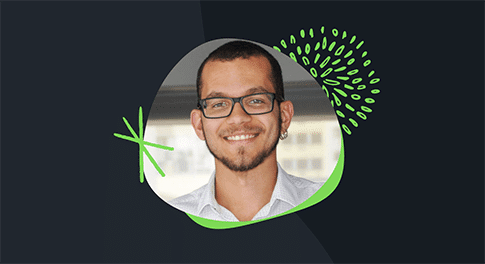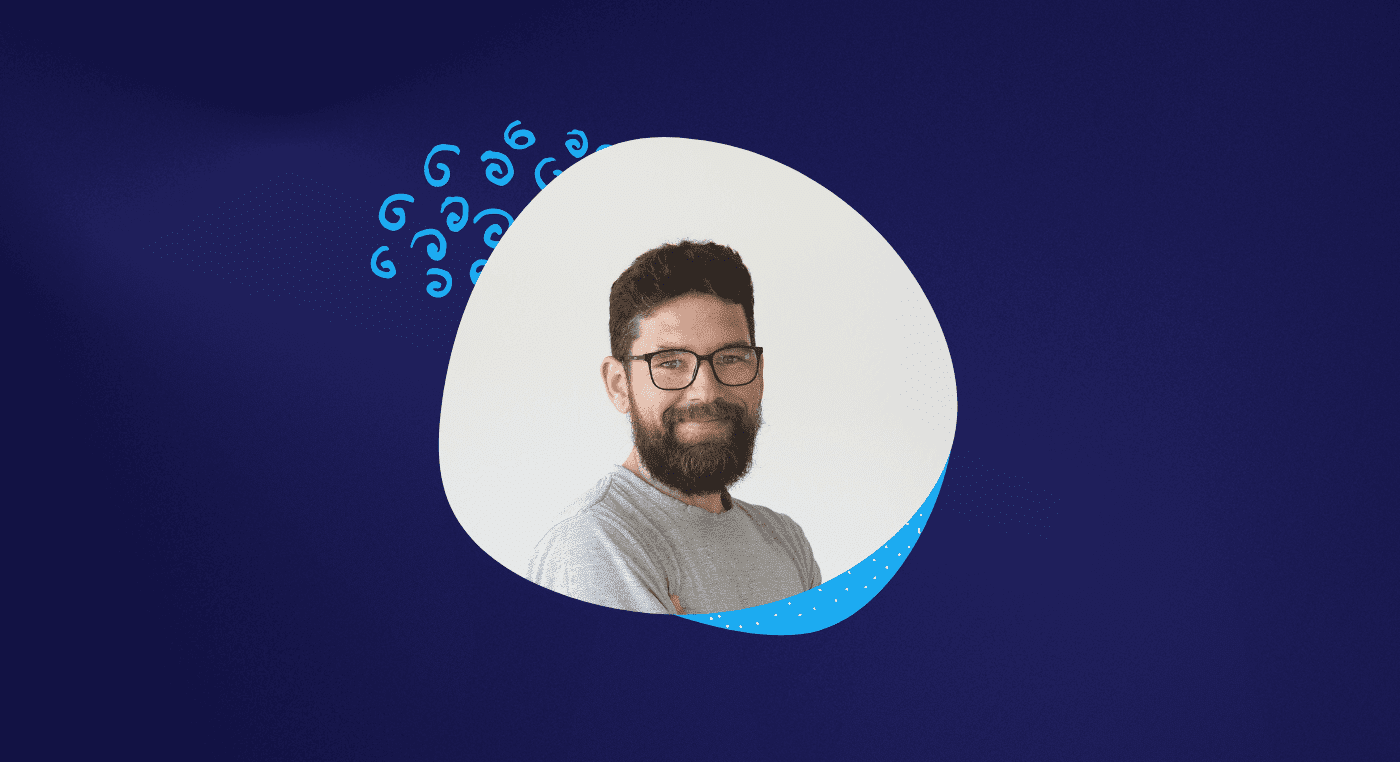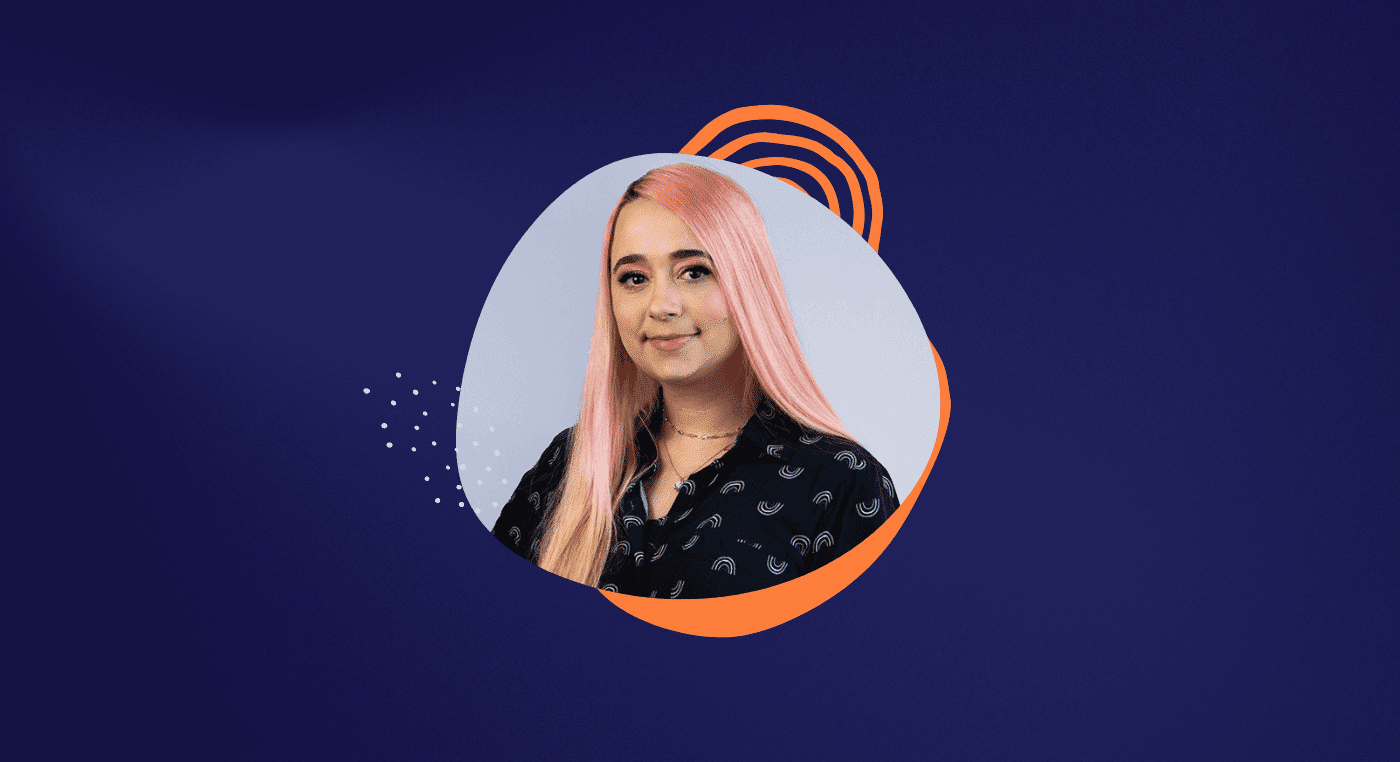Israel shared his inspiring story of transitioning careers from Graphic to UX Design with us.
In this interview, he tells us about his rigorous selection process to secure a position at Seedrs in Portugal and how a surprising strategy in his portfolio played a crucial role in his successful journey.
When you transition from Graphic Design to interface design, you need a lot of hands-on experience, and the MID offers exactly that. – Israel Mesquita
Israel, what was your background before transitioning to UX Design?
I've worked as an engineer, as a chemist, served in the army, and worked in quality control. However, none of those roles truly fulfilled me.
That's when I decided to pursue Graphic Design in college back in 2012. Right from my first semester, I started freelancing in the field to generate some income.
It was during an internship at a company in Rio de Janeiro that I had my first contact with UX Design.
As time passed, I realized that the position involved more aspects of Web Design than solely focusing on user experience.
What differences did you notice between UX Design and Graphic Design?
When I worked as a Graphic Designer, the workload was more intense. Although there were elements of planning and strategy, they were relatively brief compared to the operational tasks.
As a Product Designer, I spend most of my time planning and strategizing rather than getting hands-on with the work.
I consider this difference both good and bad at the same time. It's good because I'm developing my strategic thinking, which is a great advantage for working in a company.
However, I'm also someone who enjoys the operational aspects. And sometimes, I miss that part.

Reading tip: Design: Did I Choose the Wrong Profession?
How were the transition to Portugal and the process of getting into Seedrs?
I already had Portuguese citizenship, so I decided to pursue a Master's degree in Design Management in Portugal. When I arrived there and started studying, I realized that I could balance my studies with work.
That's when I began sending out my resume to various places. During this process, I came across the opportunity at Seedrs. It was a position suitable for someone with more experience, a mid-level or senior role.
Therefore, I was hesitant to apply, but I gathered my courage and sent them my resume.
The interview
They ended up reaching out to me and scheduling a first interview that was going to be conducted entirely in English. This was my first challenge in the process.
I wasn't used to speaking English for extended periods of time, so I had to push myself to have a conversation with the interviewer for the full 30 minutes.
After the interview, one week later, I was called in for the second part of the process, which consisted of a practical UX and UI test.
For this test, the MID program was incredibly helpful. I knew exactly what I needed to do. I researched, studied, and developed a solution for the test.
However, the biggest challenge was not the test itself, but presenting it entirely in English again. I ended up improvising a lot during the presentation because I didn't have time to structure it better.
I arrived, opened my computer, launched Sketch, and began the presentation, showcasing the problem and my solutions. I finished the presentation and went home without knowing whether they liked what they saw or not.
The next day, they contacted me to schedule the third and final phase of the process: an interview with the CPO. I must confess that I thought this last phase would be easier, considering the worst was already over. Unfortunately, I was mistaken.
Interview with the CPO
The CPO started asking various technical questions and inquired about my background and experiences as a Product Designer. I made it clear to him that I didn't have extensive experience but believed I had the necessary experience for the position.
At the end of the interview, he told me that the company liked me and that I could have the chance to go through a 3-month trial period.
However, he emphasized that I needed to significantly improve my English and develop myself further in order to eventually secure a permanent position.
True to his words, they called me a few days after that interview, offering the opportunity to work as a Junior Designer, undergoing a 3-month trial period.
How did you structure your portfolio?
I find this question fascinating because, after some time, I discovered that Seedrs hired me not solely based on the quality and complexity of my portfolio projects but rather because of the Storytelling approach I applied.
Since I have a background in Graphic Design, I decided to create a unique identity for my portfolio. From this idea, the D-Hero (Design Hero) was born, a character that I incorporated along with Storytelling in my portfolio.
It was intriguing to see that the company considered the aspect of Storytelling more important than the projects themselves.
Reading tip: UX Design Portfolio: 6 Essential Tips for Building Yours



Besides Storytelling, what else do you believe was important for your portfolio?
What I find extremely important to include in a portfolio is your entire journey to reach the final layout.
Companies want to see this. They want to know how you think and approach challenges to solve a problem.
Therefore, my advice is to go beyond showcasing the final results and show the entire process you went through to achieve those results.
What are your challenges in this new field?
One of my main challenges is humility. It happens when you transition from a field you already master to a new one where you are still a beginner.
This transition can make us feel insecure and unprepared. However, it also presents an opportunity for us to learn faster and have the privilege of making mistakes.
The demands and expectations from a beginner are different from a senior professional, for example. They constantly provide me with feedback, and I am constantly learning from it.
I don't need to pretend to be more or less experienced; I simply remain honest with everyone, and that has proven to be very important.
Another significant challenge I am facing is the English language. I have never worked in a place where I need to speak English almost 100% of the time. Although the office is located in Lisbon, we have a lot of interaction with the London office, which is why English proficiency is mandatory.

Reading tip: User Journey Map: Understanding and Improving Interactions
How did the MID program help you in your process?
The MID program helped me in many ways. Firstly, it provided practical learning. When you transition from Graphic Design to interface design, you need a lot of hands-on experience, and the MID offers exactly that.
Without the program, I would have faced many more obstacles today and wouldn't have had this job opportunity.
Additionally, the program opened my mind to the various opportunities that exist in the field of UX/UI. Previously, I associated Experience Design mainly with web and mobile. However, you showed me many other areas where I could work and apply UX/UI concepts.
What are your plans for the future?
Developing my skills in Product Design and English. In the future, I plan to take courses from NN/g (Nielsen Norman Group) and participate in the UX Conference because European companies highly value this event and NN/g.
I want to continue growing at Seedrs, be promoted, and perhaps even have the opportunity to transfer to London. That would be something very exciting for my career.

Any other tip for those looking to pivot into a UX Design career?
My advice is: to dream big and be patient. You probably won't achieve your biggest dream immediately, but every accomplishment along the way is a stepping stone.
Have a plan and ambition, and know where you want to go and where you want to live and work, but don't give up if it's not easy.
As I mentioned before, sometimes you need to build the steps of the ladder. So be patient, but always keep dreaming big.







